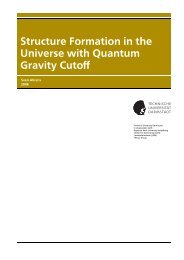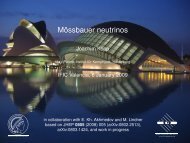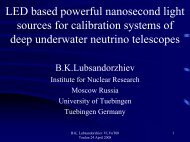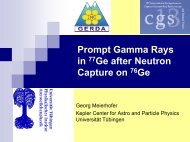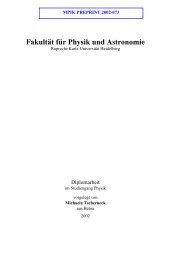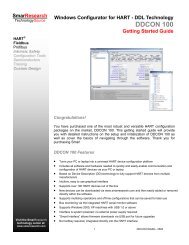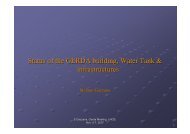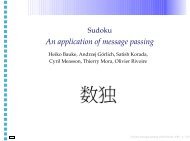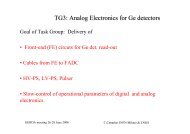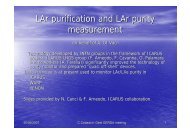Natural convection in enclosures with localized heating from below ...
Natural convection in enclosures with localized heating from below ...
Natural convection in enclosures with localized heating from below ...
Create successful ePaper yourself
Turn your PDF publications into a flip-book with our unique Google optimized e-Paper software.
HFF<br />
10,5<br />
522<br />
@<br />
ˆ 0 U ˆ V ˆ 0 at Y ˆ 1; 0 < X < 1 …9†<br />
@Y<br />
For stream function, the boundary condition for entire surface of the enclosure<br />
is taken to be<br />
ˆ 0 …10†<br />
which implies that there is no mass transfer through the walls of the enclosure<br />
and that the boundaries themselves form one of the stream l<strong>in</strong>es.<br />
In general, the value of the vorticity on a solid boundary is deduced <strong>from</strong><br />
Taylor series expansion of the stream function around the solid po<strong>in</strong>t and<br />
can be expressed mathematically as<br />
wall ˆ @2<br />
@n2 …11†<br />
where wall is the value of the vorticity at wall and n is the outward drawn<br />
normal of the surface. In numerical calculations, the values of vorticity at<br />
corners are taken as averages of the values of vorticity at two neighbor<strong>in</strong>g<br />
nodes (Ayd n et al., 1999a).<br />
The average Nusselt numbers, Nu for the heated portion of the lower wall is<br />
given by<br />
Nu ˆ<br />
Z 1‡<br />
2<br />
where Nu(X) is the local Nusselt number and is given by<br />
1 2<br />
Nu…X† ˆ<br />
Nu…X†dX …12†<br />
@<br />
@Y Yˆ0<br />
…13†<br />
Numerical procedure<br />
The govern<strong>in</strong>g equations along <strong>with</strong> the boundary conditions are solved<br />
numerically, employ<strong>in</strong>g f<strong>in</strong>ite-difference techniques. The vorticity transport<br />
and energy equations are solved us<strong>in</strong>g the alternat<strong>in</strong>g direction implicit method<br />
of Peaceman and Rachford (Roache, 1982), and the stream function equation is<br />
solved by SOR (successive over-relaxation) method (Patankar, 1980). The overrelaxation<br />
parameter is chosen to be 1:8for stream function solutions. In order<br />
to avoid divergence <strong>in</strong> the solution of vorticity equation an under-relaxation<br />
parameter of 0.5 is employed. The buoyancy and diffusive terms are discretized<br />
by us<strong>in</strong>g central differenc<strong>in</strong>g while the use of hybrid differenc<strong>in</strong>g is preferred<br />
for convective terms for numerical stability. Start<strong>in</strong>g <strong>from</strong> arbitrarily specified<br />
<strong>in</strong>itial values of variables, the discretized transient equations are then solved by<br />
march<strong>in</strong>g <strong>in</strong> time until an asymptotic steady-state solution is reached.



